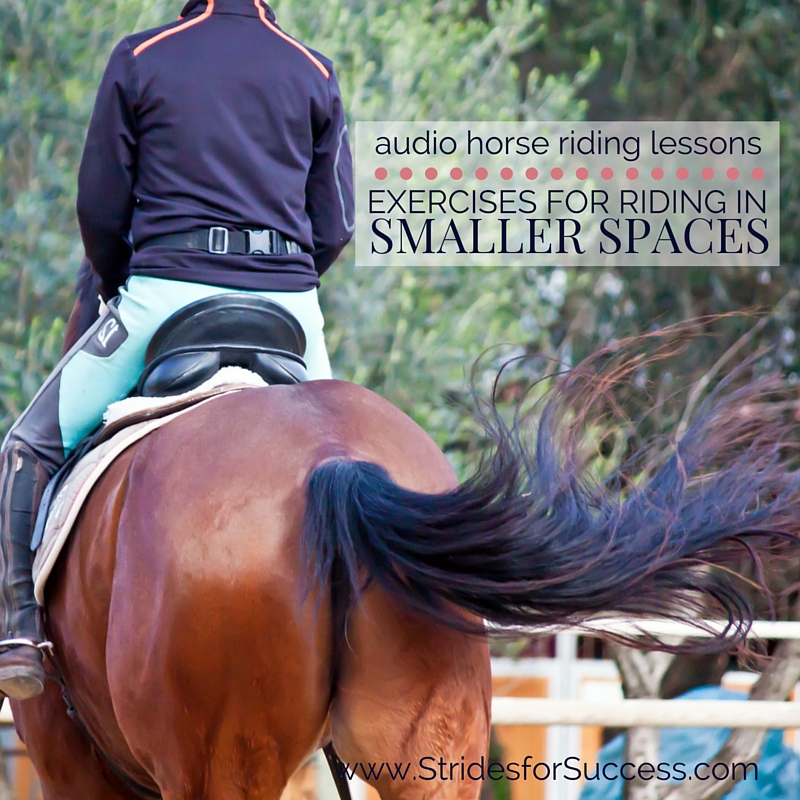
There are certain times of the year when regular riding becomes a little struggle; winter can be one of them. Sometimes summer can be equally as troublesome for many riders.
Due to this being an issue at some point or another for so many riders around the world, I thought it would be fun to try approaching this seeming ‘drawback’ from a slightly different angle.
This episode of the Daily Strides Podcast is about useful exercises and movements that you can use in a smaller riding area. When the weather is ‘extreme’ we often have no choice but to ride in smaller outdoors or indoor arenas, or perhaps the floodlights only cover a smaller section of the arena.
For more details about what to focus on when riding in your smaller arena, I have another episode and blog post HERE. In there you will learn how to turn this initial ‘constraint’ in your training, into an actual tool to help both you and your horse make progress.
During these times, it is easy to fall into the trap of thinking that we have no alternative but to sacrifice our horse’s schooling and work; however, this couldn’t be further from the truth.
Exercise 1 for a Small Arena
The first exercise I suggest you ride is 10-meter circles and shallow 5-meter loops between those circles. The whole time you are riding this, either in walk or trot, pay close attention to what your body is doing, particularly that you are not getting ahead of the movement, which is very tempting to do when riding smaller movements and figures.
I also want you to focus on not allowing your horse’s attention to wander, and you do this by continuously asking different questions and changing the movements and patterns we are riding to keep his concentration on you, the rider
Exercise 2 for a Small Arena
Once you have managed to get your horse consistently riding in and out of the circles and loops, begin working on a 20m square. Start this in walk and, once you have established and can maintain a rhythm, you can add trot.
If you horse is developed enough mentally and physically, you can also ride this exercise in canter.
Again, it is imperative that we are continuously asking a different question so horse horses don’t begin to anticipate, but also don’t become bored and dull.
You can also begin incorporating a lot of half halts and transitions into your ride, as well as some grids that are specifically created for a smaller working space.
Happy Riding
Lorna
Additional Resources To Help Equestrians:-
-
-
- Free Planner for Riders; One Exercise Multiple Ways
- A Simple Exercise for Straightness
- Maintaining Straightness Throughout the Ride
- The Daily Strides Podcast on iTunes
- Daily Strides Podcast on Google Play
- The Daily Strides Podcast on Stitcher Radio
- Join Connection; The Online Membership for Equestrians
- Daily Strides Premium Newsletter
- Lunging for Riding
- Groundwork For Riding
- Connect in the Mindset & Fitness for Equestrians Private Group
- Connect in the Virtual Stable Lounge Private Group
-
